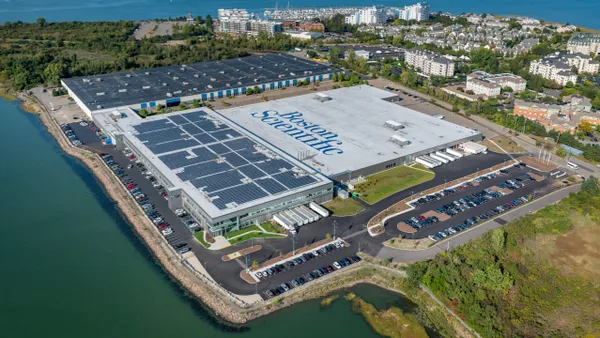Dive Brief:
- Alcyone Lifesciences announced Monday it received FDA's breakthrough designation for its delivery system for intrathecal bolus administration of drugs to treat severe disorders of the central nervous system.
- The ThecaFlex DRx system consists of a port that is implanted under the skin and an intrathecal catheter for cerebrospinal fluid aspiration and infusion of therapies. The breakthrough designation, which is intended to speed product review, follows Alcyone's announcement in December of a strategic collaboration with Roche for developing treatment options for patients with neurological disorders.
- Alcyone said it is preparing to file an investigative device exemption (IDE) clinical trial submission this year to evaluate the safety and efficacy of the device in patients with spinal muscular atrophy. The company also said it is planning to miniaturize the ThecaFlex DRx system for younger patients.
Dive Insight:
Some drugmakers are focusing on neuroscience as the next big therapeutic area for innovation in part due to research that has improved scientists' understanding of central nervous system (CNS) disorders. With oncology becoming one of the more crowded therapeutic fields, companies including Roche are turning to areas such as neuroscience with sizable patients populations and high unmet medical needs for their therapy development pipelines.
The strategic collaboration with the Roche neuroscience group supports the drugmaker's development of intrathecal therapies and novel antisense oligonucleotide treatment options for patients with neurological disorders, Alcyone said. Also referred to as RNA interference, antisense oligonucleotides work by targeting the messenger RNA responsible for the production of disease-causing proteins.
Drugs delivered intrathecally, or injected into the spinal cord, are often challenging to administer. Alcyone said its delivery system will make such drugs accessible to more patient populations. The company's proposed indication for the ThecaFlex DRx system is for patients 3 years of age and older who require chronic bolus intrathecal treatment for life threatening, debilitating CNS conditions such as neurodegenerative diseases and CNS malignancies.
These patients are unable to undergo lumbar puncture, a procedure for taking fluid from the spine in the lower back through a hollow needle, due to spinal anomalies or resistance to repeated lumbar punctures for therapy administration and cerebrospinal fluid aspiration. A patient may be resistant to repeated lumbar punctures due to respiratory issues or other comorbidities and at increased risk for complications due to the need for repeat anesthesia and imaging radiation exposure to safely perform a lumbar puncture.










